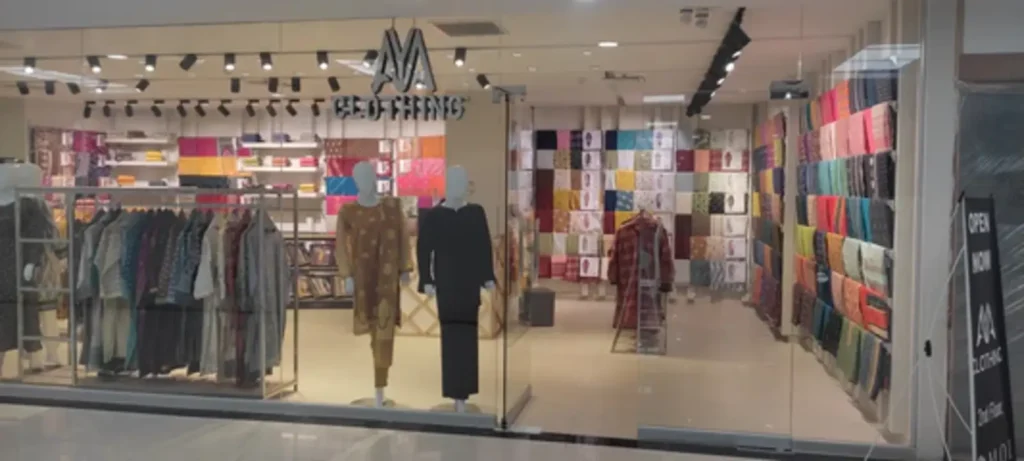
clothing store news,The clothing retail industry is a vibrant and dynamic sector that continually adapts to changing consumer preferences, technological advancements, and global challenges. As fashion trends evolve and consumer behaviors shift, clothing store news has become essential for keeping both retailers and shoppers informed about the latest developments. In this article, we’ll explore key trends, innovations, and insights shaping the future of clothing stores.
The Rise of Sustainable Fashion
One of the most significant trends in recent years has been the growing emphasis on sustainability. Consumers are increasingly aware of the environmental impact of fast fashion, leading many clothing stores to pivot towards more sustainable practices. This includes using eco-friendly materials, implementing fair labor practices, and reducing waste throughout the supply chain.
Innovations in Sustainable Practices
Retailers are exploring various innovative approaches to sustainability. Many are adopting circular fashion models, where clothes are designed to be recycled or repurposed at the end of their lifecycle. Brands like Patagonia and Eileen Fisher are leading the charge, encouraging customers to return used clothing for recycling or resale.
In addition, technology is playing a crucial role. Advanced fabric technologies are enabling the production of materials that are both durable and environmentally friendly. For instance, companies are developing fabrics made from recycled plastics or organic cotton, significantly reducing their carbon footprint.
Digital Transformation in Retail
The digital landscape is rapidly transforming how clothing stores operate. E-commerce has exploded, and the COVID-19 pandemic accelerated this trend as consumers turned to online shopping out of necessity. Retailers are now investing heavily in their online platforms to provide a seamless shopping experience.
Omnichannel Retailing
Omnichannel retailing is becoming the standard, where customers can engage with a brand across multiple platforms—be it in-store, online, or through mobile apps. This integration allows for a cohesive shopping experience, where consumers can easily transition between channels. Features such as buy online, pick up in-store (BOPIS) have become increasingly popular, providing convenience and efficiency.
Virtual Reality and Augmented Reality
Innovations in virtual reality (VR) and augmented reality (AR) are also transforming the retail landscape. Many clothing stores are incorporating AR technology into their shopping experiences, allowing customers to virtually try on clothes using their smartphones or in-store kiosks. This technology not only enhances the shopping experience but also helps reduce return rates by allowing customers to see how clothes fit before purchasing.
The Importance of Community and Experience
In addition to digital transformation, modern consumers are seeking a sense of community and experiential shopping. Clothing stores are rethinking their approach to customer engagement by creating spaces that foster community interaction and offer memorable experiences.
Events and Workshops
Many retailers are hosting events, workshops, and pop-up shops to create a sense of belonging and engagement. These events often feature local artists, designers, or influencers, which not only helps promote the brand but also strengthens community ties. For instance, a clothing store might host a sustainable fashion workshop where customers can learn about eco-friendly practices while shopping.
Personalization
Personalization has become a significant focus in retail, as consumers expect tailored experiences. Clothing stores are leveraging data analytics to understand customer preferences and shopping behaviors. By offering personalized recommendations, promotions, and communications, retailers can enhance customer loyalty and satisfaction.
Challenges Facing the Clothing Retail Industry
While the clothing retail industry is evolving rapidly, it is not without its challenges. Economic uncertainties, supply chain disruptions, and changing consumer preferences can pose significant hurdles for retailers.
Supply Chain Management
The global supply chain has faced significant disruptions in recent years, impacting inventory management and delivery times. Clothing stores must adapt by diversifying their supply chains and sourcing materials closer to home to mitigate risks.
Economic Pressures
Economic factors such as inflation can also affect consumer spending. Retailers must be agile in their pricing strategies and product offerings to cater to budget-conscious consumers while still maintaining their brand identity.
The Future of Clothing Retail
As we look to the future, the clothing retail landscape will likely continue to evolve in response to consumer demands and technological advancements. Sustainability, digital transformation, and community engagement will remain central themes as retailers strive to create innovative and meaningful experiences for their customers.
The Role of Technology
Emerging technologies like artificial intelligence (AI) and machine learning will further refine personalized shopping experiences, optimize inventory management, and enhance customer service. Retailers will increasingly rely on data-driven insights to inform their strategies and improve operational efficiency.
A Focus on Inclusivity
Inclusivity in sizing, style, and representation is becoming a crucial factor for brands aiming to connect with a diverse consumer base. Clothing stores that prioritize inclusivity in their marketing and product offerings are likely to resonate more deeply with consumers.
Conclusion of clothing store news
Clothing store news is more than just a reflection of the latest trends; it encapsulates the broader changes occurring within the retail landscape. As sustainability, digital innovation, and community engagement take center stage, retailers must remain adaptable and forward-thinking to thrive in this competitive environment. The future of clothing retail promises to be exciting, filled with opportunities for brands that prioritize their customers and the planet.
Also read more about



